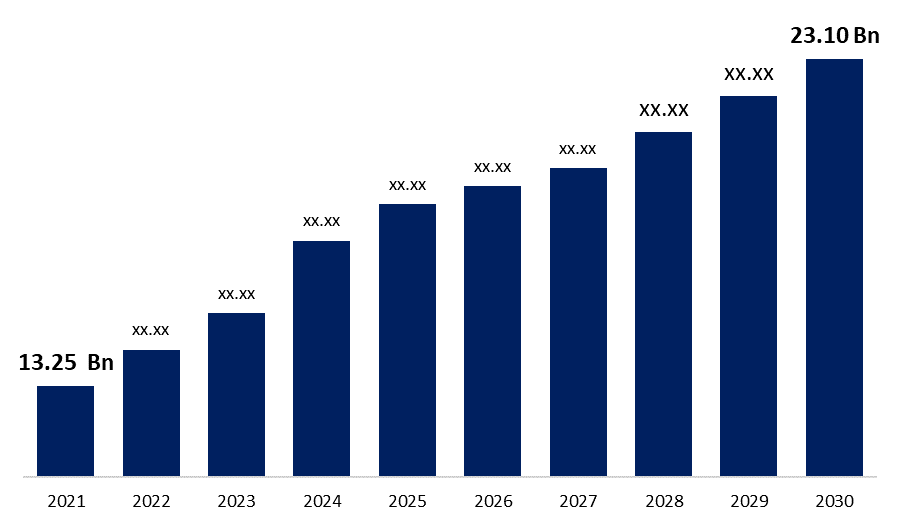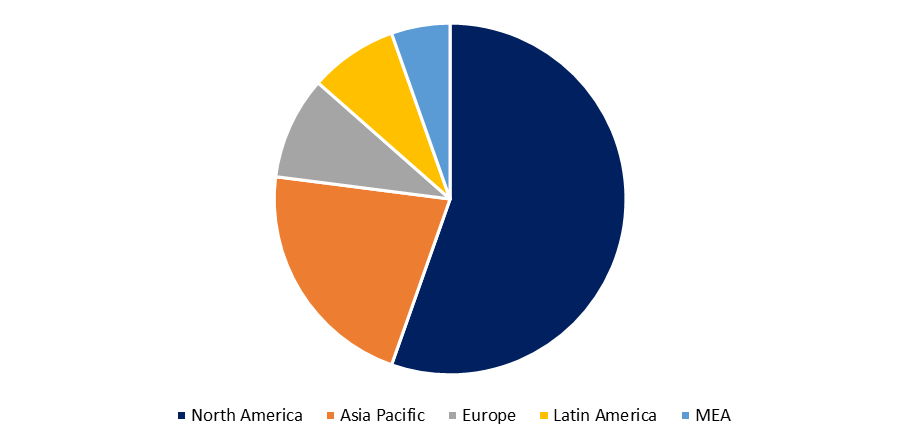Global Military Radar Market Size, Share & Trends, COVID-19 Impact Analysis Report, By Component (Digital Signal Processor, Transmitter, Receiver, Duplexer, Antenna, and Others), By Platform (Space-Based Radar, Naval Radar, and Land Radar), By Range (Very Long (> 500 km), Long (200-500 km), Medium (50-200 km), Short (10-50 Km), and Very Short (< 10 Km)), By Application (Airspace Monitoring & Traffic Management, Weapon Guidance, Airborne Mapping, Navigation, Ground Surveillance & Intruder Detection, and Others), By Frequency (C-Band, X-Band, S-Band, L-Band, UHF/VHF/HF-Band, and Ku/K/Ka-Band), and By Region (North America, Europe, Asia-Pacific, Latin America, Middle East, and Africa), Analysis and Forecast 2021 – 2030
Industry: Aerospace & DefenseMILITARY RADAR MARKET: OVERVIEW
The Military Radar Market was valued at USD 13.25 Billion in 2021, the market is projected to grow USD 23.10 Billion in 2030, at a CAGR of 4.11%. Radar is used in defense applications to find missiles, ships, airplanes, and spacecraft that pose a danger from the air, land, or water. Military equipment purchases are increasing as a result of the increased demand for defense capabilities, which is fueling the market's expansion. The ongoing necessity to keep an eye on the escalating terrorist activities along with geopolitical tensions can be linked to the increased defense spending by emerging countries in the Asia-Pacific and the Middle East. As a result, China launched a new portable and versatile radar in April 2021 that can spot drones, low-flying cruise missiles, and stealth aircraft. Also planned for flight by 2022 is the NASA-ISRO Synthetic Aperture Radar (NISAR) satellite.

Get more details on this report -
COVID-19 ANALYSIS
Due to the COVID-19 pandemic, the worldwide aerospace and defense (A&D) manufacturing industry has been experiencing unprecedented upheaval. The defense industry is anticipated to remain steady and expand, nonetheless, as the majority of nations have not cut their defense spending and are still committed to maintaining their military prowess. Some of the most obvious consequences of the pandemic's influence on the defense industry are supply-side interruptions. Businesses in nations that have been severely hit by COVID-19 or those reliant on supply chains that are based in affected countries have been the pandemic's first casualties. Thus, some of the defense programs may experience temporary cost increases and delays as a result of the wider supply chain disruption.
MILITARY RADAR MARKET: TREND
MIMO Radar Development Propel Market Growth
The multiple-input multiple-output (MIMO) radar consists of several digital receiver-equipped antennas that broadcast arbitrary waveforms. MIMO radars were created to be lighter, more powerful, smaller, and less expensive than traditional AESA (Active Electronically Scanned Array) radars. With its numerous broadcast and receive antennas that can function at various frequencies, these radars take use of a 3D range. For ground radar applications, it is projected that this new MIMO technology will perform better than the established active electronically phased array (AESA) systems. Compared to AESA, MIMO has a superior jamming resistance.
MILITARY RADAR MARKET: DRIVERS
Enhancing Air Defense Capabilities Drive Market Growth
Due to border disputes and tensions in Saudi Arabia, Iraq, and Syria, the Middle East has long been a troubled area. Arms imports into the region have increased as a result of regional power uncertainty and local conflicts. Rising border disputes, the purchase of advanced weapons, and political unrest in nearby nations all contribute to the market's expansion.
These worries have prompted a rise in defense spending and the purchase of military radars to identify potential threats, which is projected to propel the expansion of the military radar market. Moreover, it is projected that these systems will benefit from the transition from conventional warfare to electronic and cyber warfare.
Global Military Radar Market Report Coverage
| Report Coverage | Details |
|---|---|
| Base Year: | 2021 |
| Market Size in 2021: | USD 13.25 Billion |
| Forecast Period: | 2021-2030 |
| Forecast Period CAGR 2021-2030 : | 4.11% |
| 2030 Value Projection: | USD 23.10 Billion |
| Historical Data for: | 2017-2020 |
| No. of Pages: | 210 |
| Tables, Charts & Figures: | 119 |
| Segments covered: | COVID-19 Impact Analysis Report, By Component, By Platform, By Range, By Frequency |
| Companies covered:: | Lockheed Martin Corporation, Northrop Grumman Corporation, Leonardo S.p.A., Israel Aerospace Industries, Raytheon Technologies Corporation, Airbus, BAE Systems, General Dynamics Corporation, Honeywell International, Saab AB, Thales Group, Biome Technologies plc. |
| Growth Drivers: | 1)The Global Military Radar Market is segmented by Component, Platform, Range, Application, Frequency, and Region 2)Based on the Region, the Global Military Radar Market is categorized into North America, Europe, Asia-Pacific, Latin America, the Middle East and Africa. |
| Pitfalls & Challenges: | COVID-19 has the potential to impact the global market |
Get more details on this report -
MILITARY RADAR MARKET: RESTRAIN
Lack of Radar Solutions to Counter Drones to Restrain Growth
Because most drones are so small, radars cannot detect them unless they are equipped with ADS-B or a transponder. There is currently no way to block such a little item on the radar view. Additionally, radar systems are unable to handle such a large number of targets at once due to the growing use of commercial or private drones. To prevent the system from becoming overloaded, the built-in filters only reveal the more crucial goals, and they filter out the rest. The difficulty in detecting drones and the growing use of small drones for surveillance are anticipated to restrain market expansion.
MILITARY RADAR MARKET: SEGMENTATION
The Global Military Radar Market is segmented by Component, Platform, Range, Application, Frequency, and Region. Based on the Component, the market is categorized into Digital Signal Processor, Transmitter, Receiver, Duplexer, Antenna, and Others. Based on Platform, the market is categorized into Space-Based Radar, Naval Radar, and Land Radar. Based on Range, the market is categorized into Very Long (> 500 km), Long (200-500 km), Medium (50-200 km), Short (10-50 Km), and Very Short (< 10 Km).Based on the Application, the market is categorized into Airspace Monitoring & Traffic Management, Weapon Guidance, Airborne Mapping, Navigation, Ground Surveillance & Intruder Detection, and Others. Based on the Frequency, the market is categorized into C-Band, X-Band, S-Band, L-Band, UHF/VHF/HF-Band, and Ku/K/Ka-Band. Based on the Region, the market is categorized into North America, Europe, Asia-Pacific, Latin America, Middle East and Africa.
SEGMENTATION: BY REGION
Based on the Region, the Global Military Radar Market is categorized into North America, Europe, Asia-Pacific, Latin America, the Middle East and Africa.
The North America region is expected to dominate the market share owing to the biggest defense spending by the United States and the purchase of cutting-edge military radars that are to blame for the growth. The market is expected to increase as a result of efforts and programs like the Air and Missile Defense Radar and Three-Dimensional Expeditionary Long-Range Radar. Important OEMs like Boeing, Lockheed Martin, Northrop Grumman, and others also contribute to the market's expansion.
However, the Asia Pacific is expected to highest growth during the projection period. The demand for advanced threat detection systems is rising in the Asia-Pacific as a result of the region's developing cross-border problems and geopolitical tensions in nations like China-India and India-Pakistan. The Indian Defense Ministry and Mahindra Telephonic signed a contract in June 2021 to buy eleven airport surveillance radars for the Indian Coast Guard and Indian Navy.

Get more details on this report -
MILITARY RADAR MARKET: KEY PLAYERS
- Lockheed Martin Corporation
- Northrop Grumman Corporation
- Leonardo S.p.A.
- Israel Aerospace Industries
- Raytheon Technologies Corporation
- Airbus
- BAE Systems
- General Dynamics Corporation
- Honeywell International
- Saab AB
- Thales Group
- Others
MILITARY RADAR MARKET: RECENT DEVELOPMENT
- March 2021- A contract for the purchase of radar systems for USD 175 million was signed by the defense ministers of Slovakia and Israel. According to the agreements, Israel will provide the Slovak Air Force with seventeen highly advanced radar systems built by Israel Aerospace Industries (IAI).
- April 2021- A modification contract worth USD 243.2 million was signed by Raytheon Technologies Corporation and the Missile Defense Agency for the delivery of the AN/TPY-2 radar, which was created to detect ballistic missiles and direct the Terminal High Altitude Area Defense system.
MILITARY RADAR MARKET: REPORT OVERVIEW
The scope of the report includes a detailed study of regional markets for Global Military Radar Market. The Global Military Radar Market is segmented by Component, Platform, Range, Application, Frequency, and Region. It reveals the market situation and future forecast. The study also covers the significant data presented with the help of graphs and tables. The report covers information regarding the competitive outlook including the market share and company profiles of the key participants operating in the Global Military Radar Market.
Need help to buy this report?